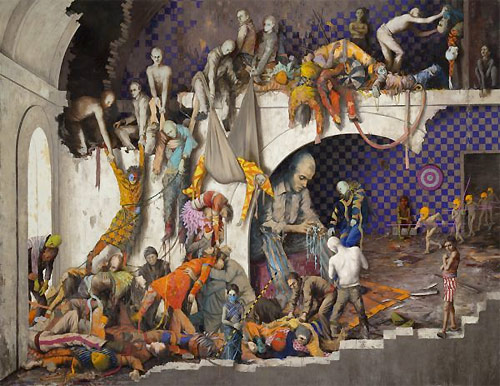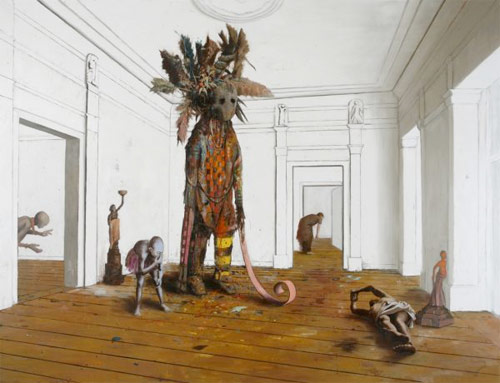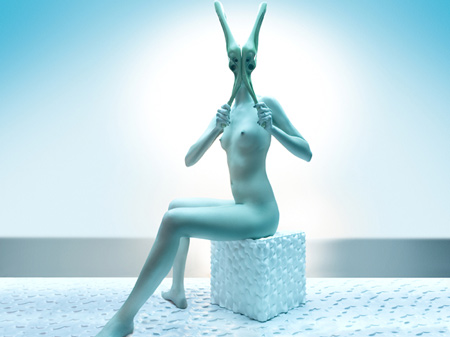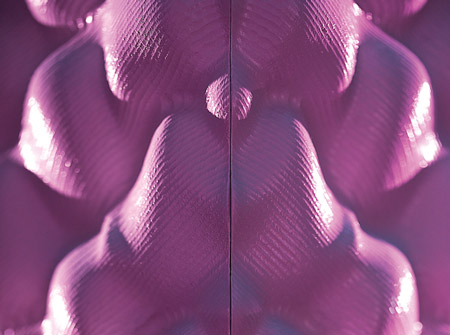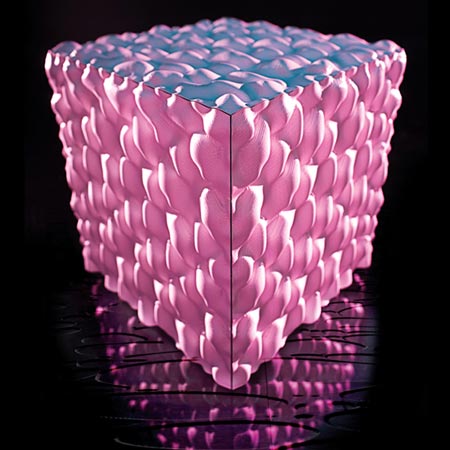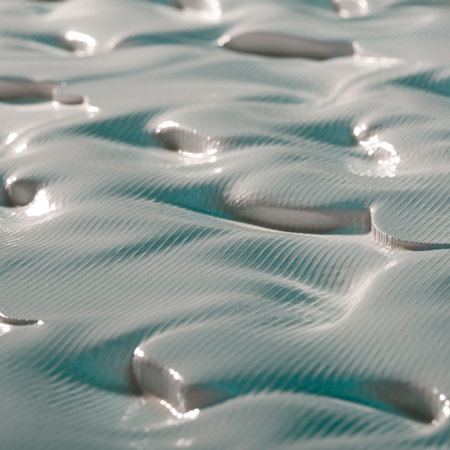From whatever afterlife meets us at our demise, Henry David Thoreau made clear his opinion of this blog to me today by way of organic vegetable vendors, Bjork, Larry King, and an impossibly hideous Chevrolet that I couldn't even find on the internet (thats how ugly) but could easily be substituted for such vehicles as the Lumina or the SSR Push. My journey began, as many do, upon an instance of stupidity; waking up from a long nap, I walked over to my bookshelf and imagined that I'd find Harry Stephen Keeler's
The Riddle or the Traveling Skull waiting for me, but was hit by something blunt before I could get there: the realization that I did not, nor did I ever, own the book. Whatsthebigdeal? The Keeler book was assigned to me by
Ed Park for his "Only Connect: Strategies for Writing" course. So, without much problem, I reserved the book at Barnes and Nobel in Union Square and walked downtown.
Why, you may be asking, would a professor ever assign a Harry Stephen Keeler novel? Isn't, you may be remembering, he the one who has been dubbed the worst mystery writer of all time? Wouldn't, you may be thinking, a writing professor assign a piece with substance and literary value? The answer: pending.
Did I just pick up and walk downtown right after reserving the book as I have said? No, not really. Anyone who has used the Barnes and Nobel book-pick-up-from-local-store system knows that it takes them an hour to send you a confirmation e-mail. So why do I say I reserved the book and started walking downtown? My meandering through the world wide web seemed irrelevant for most of my walk. I realized the importance of the Larry King debate between Anthony Bourdian and Jonathan Safran Foer in retrospect. They were debating the importance of meat in our diets. Jonathan Safran Foer's new book is called
Eating Animals. Being one of my greatest literary heros, the announcement of this new book struck me as fuckingannoying, to say the least. Everything nutritionally biological in me sided with the chef, but the scene at Union Square, culminating in a paranormal connection between me and the late, great naturalist, shook my foundation.
You may be thinking,
but what about that peta video I saw at my weed dealer's house or that chick grinding video or the effect of cattle production on the environment or the deadliness of e. coli or heart disease, and you are right, but did you ever take the livestock's intentions into consideration? What do these quasi conscious beings really want out of life? The answer, says Darwin, is to pass on their genetic makeup as far and wide as they can. Is it any mistake that meat cattle have evolved to fit our every need? Is it any mistake that we have wiped out practically every other species of cow on the planet to spread the genes of the ones that help us out for the things we want? Shake Shack Burgers? Our livestock have been outsmarting us into slaughtering them for food and, perhaps you're right, they need to be punished by shutting down factory farms and showing the livestock who's boss of this planet. (but seriously, can't we just keep on engineering? Couldn't we just adapt like we always do? Isn't that, like, our thing?)
Upon Union Square, Flying Lotus's mix of Bjork's 'All is Full Love' came on the ipod and I started getting that profound feeling that good music often puts on a person. This, Henry David Thoreau, was a dirty trick. Bjork is one of the most influential electronic artists of our time and should be out of your scope. There was construction going on in the park and, before I could realize, I was walking through a organic farmers market with all the staples of contemporary, anti-foodie banality: fresh fish vendors with long beards and long triton-like hair; fruit pushers with short, blonde dreads; zucchini peddlers with thick rimmed glasses, ponytails, and paint on their overalls. This is where the retrospective importance of the Larry King special hit me. This was kind of nice. This was the way farming was supposed to be: vegetables in the street. The song picks up and Bjork really starts to belt it out, "All is full of love, all is full of love, all is full of love," and I turn into the elevated area of the park to better orient myself and, like a scene from a disney princess movie circa 1969, squirrels, sparrows, larger unidentifiable birds and other (likely projected) woodland creatures came running out toward a woman with breadcrumbs.
"ALL IS FULL OF LOVE" (I'm trying to recreate this madness for you).
I picked up the book from Barnes and Noble and made my way home. I passed by the unnamed, hideous Chevy and thought,
damn Henry, you got me. Maybe there's something to all this nature stuff that we keep fucking up.. Then I passed the United Cerebal Palsy of New York City building and thought,
no, I've been right all along. I picked up some street meat on the same block and got back to my
apartment. My naturalist experience sat in my head like the eggplant on my lamb and rice. I didn't know what to do with it.
The first sentence of the Keeler book justified all my fears an arduously bad read:
I knew full well, when the Chinaman stopped me in the street that night and coolly asked me for a light for his cigarette, that a light for his cigarette was the last thing in the world he really wanted! Isn't the nature of nature to die? Why was Thoreau haunting me with these images and feelings of transcendence (the bad kind). Thoreau and his ideas occupy the collective consciousness of our human world. That's his afterlife. That's all our chances at afterlife. Thoreau succeeded. He transcends his death. Our goals aren't too different. He called it spirituality; I call we call it a collective conscious. We have recently made amends. I just thought you should know.


